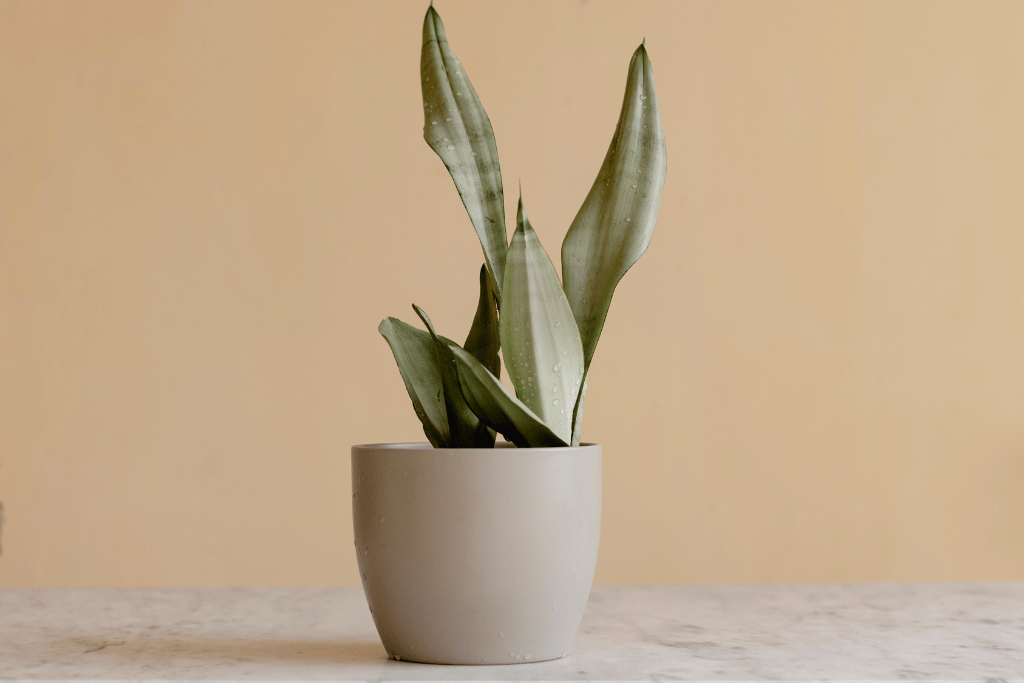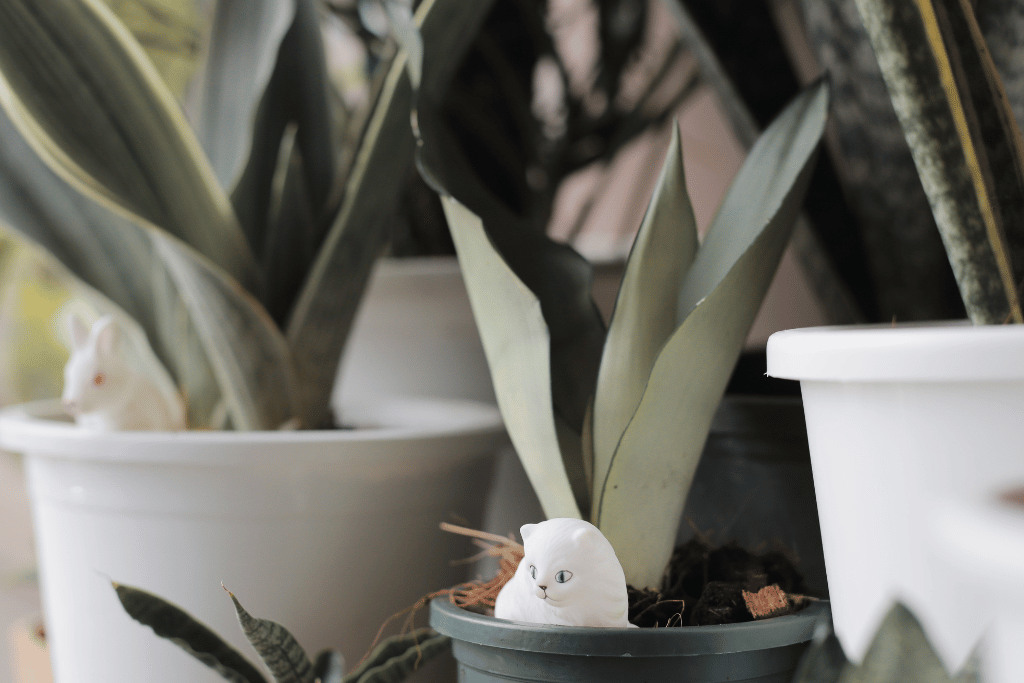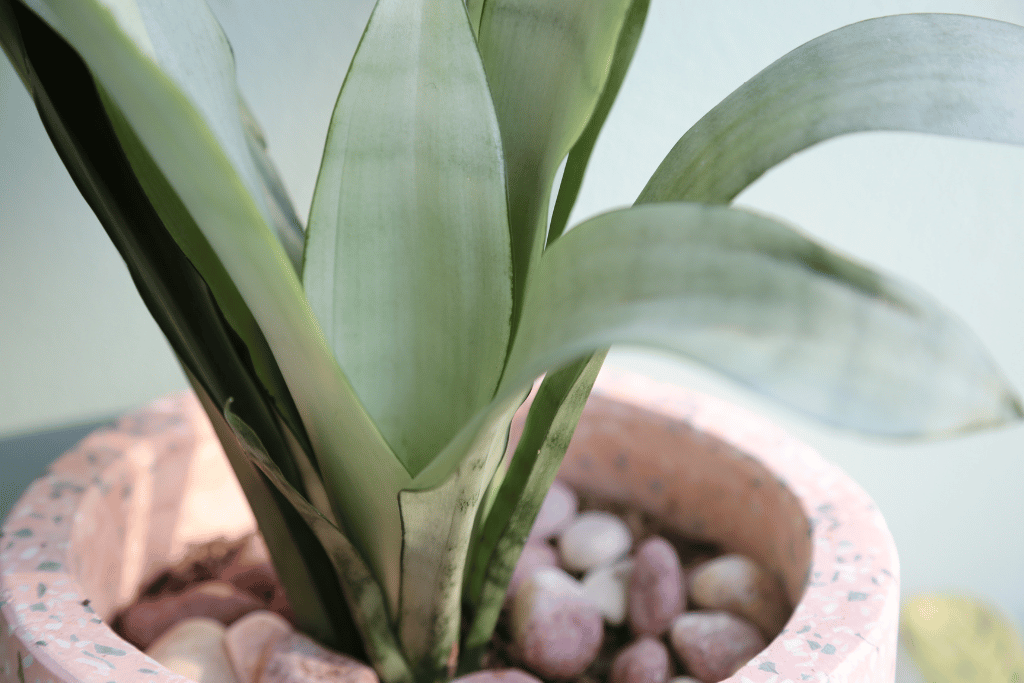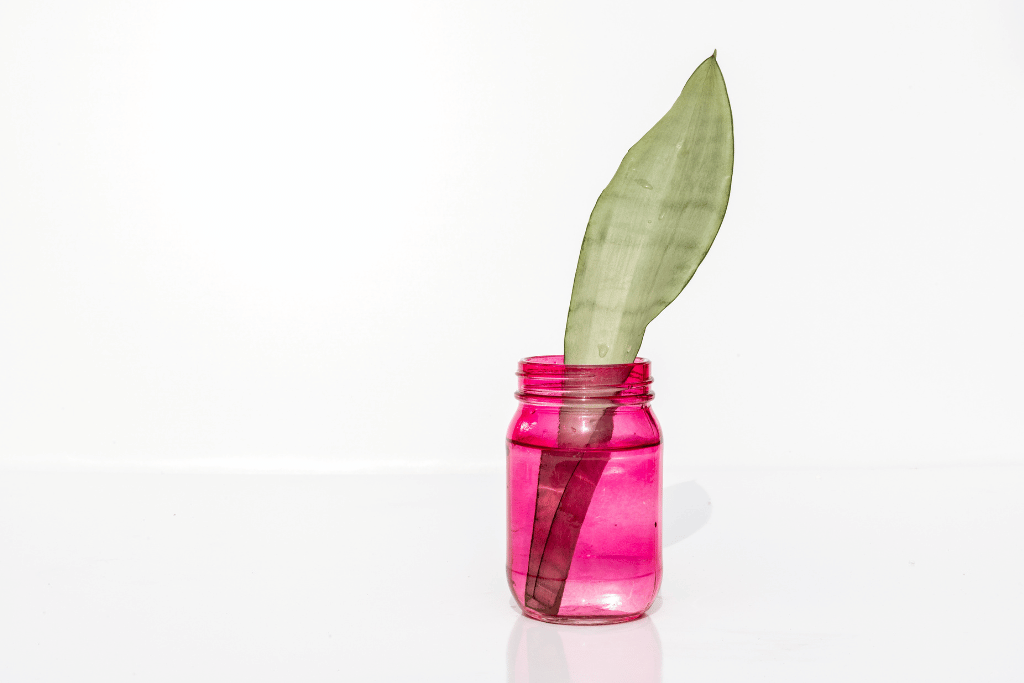
The moonshine snake plant is one of many varieties of Sanseveiera that is sought after by plant collectors. The light, silvery color of the leaves makes it stand out amongst the typical greens of the plant world. A similar species, the variegated moonshine snake plant, has the same silver-grey leaves but also sports showy yellow edges, like in other variegated varieties of snake plants.
Along with being a sight to look at, the moonshine snake plant benefits the air you breathe by filtering out pollutants, and was even included in an air quality study conducted by NASA! If you are looking to add the moonshine snake plant to your collection, you will want to properly take care of it. That’s why we’ve collected all the essential tips and tricks you need to keep your moonshine snake plant happy right here!
Moonshine Snake Plant Care
Although the care requirements for moonshine snake plants are similar to other Sansevieria species, it is always important to consider specialized needs for your variety.

Lighting & Temperature
Like other snake plants, the moonshine snake plant can tolerate lower light conditions but does best in bright, indirect sunlight. Lower light conditions will slow the growth rate and can cause other issues like overwatering if the sun is not present to warm the plant and help evaporate excess water from the soil. Avoid too many hours of direct sunlight though, as this can physically scorch the leaves and cause permanent damage.
Watering & Fertilizer
Snake plants do not require too much water, but the soil should be thoroughly soaked each time you do water the plant. Depending on the amount of sun your snake plant gets and the snake plant pot size it is planted in, you can ensure the optimal growth and health of your plant, you can probably water your snake plant every 1-2 weeks. Watch out for signs of overwatered snake plant and reduce the watering frequency in the winter to prevent issues like root rot.
If you want to use fertilizer to give your snake plant a boost during the growing season (spring and summer), be sure to choose one with balanced nutrients, to avoid over-fertilizing. Follow the directions on the specific product you buy for application timing, but in general, you should only need to apply once every 2-3 months.

Soil
Snake plants can be sensitive to overwatering because they are adapted to survive in dry regions of Africa. Constant moisture is not usually present, so this species is prone to developing issues like root rot if allowed to sit in water for too long. To avoid over-saturated soil, opt for a well-draining soil mix and add in perlite, sand, or even cactus mix to reduce the risk of water-logged soil even more.
Your snake plant should also be repotted into fresh soil every 1-2 years. Use a new pot that is 1-2 inches bigger than the current one, to give your plants’ roots more room to grow. You can also divide off portions of your moonshine snake plant into smaller pots and then re-pot the main plant into the same pot as before if you don’t want or have a bigger pot.

Issues and Tips
Just like any other house plant, the moonshine snake plant will have its own issues and downsides. These shouldn’t always be thought of as negative problems though, and are rather the way your plant communicates with you and tells you it isn’t happy! Take this opportunity to assess the attention you give your plant and adjust as needed. Let’s take a moment to read and learn about the snake plant disadvantages.
Moonshine snake plant wrinkled leaves
There can be a wide variety of reasons for your snake plant wrinkled leaves, including overwatering, underwatering, fertilizer burn, sun exposure, or your plant being root bound. Pay attention to other issues like brown spots, mushy leaves, and dry, crispy edges to help determine the cause. Some simple adjustments should get your moonshine snake plant glowing again in no time!
Moonshine snake plant turning green
As mentioned before, snake plants do best in brighter, indirect light. Although they can survive in lower light conditions, this can sometimes affect the way they grow. For the moonshine snake plant, which is prized for its silvery, light green color, a darker environment can sometimes cause it to turn a darker green. This is because darker green plant cells produce chlorophyll which will absorb light and convert it into energy for the plant. If your moonshine snake plant isn’t getting enough light, it will convert silvery, light green cells into ones that produce chlorophyll (turning them darker green) to survive.
To fix this issue, simply choose an area for your plant with brighter light. New growth will continue to have the signature light moonshine color and your plant may even produce a flower!
Moonshine Snake Plant Propagation

Snake plants are one of the easiest plants to propagate, and the moonshine snake plant is no exception. The easiest way to do this is through leaf cuttings which are then placed either into soil or water to develop roots.
- Choose a healthy, long leaf on your plant at least 3-4 inches long
- Cut the leaf off at the base of the plant using sharp, clean shears
- Allow the leaf to dry overnight to prevent rotting
- Place the base of the leaf into either
- A cup of water or,
- A small pot of new, clean soil
- If you choose water, place it in a bright area out of direct sunlight. Refresh the water every 3 days until roots appear, and then your cutting is ready to be planted
- If you choose soil, gently spray and mist the cutting regularly until roots have established
- Once your cutting is producing new leaves and growth, you can transplant it into a bigger pot to gradually increase the amount of room it has to grow

Final Thoughts
Moonshine snake plants are a wonderful and unique addition to any house. Although not overly demanding, this plant does require regular watering, bright, indirect sunlight, and proper care to truly thrive. You should also watch out for issues like wrinkled leaves, root rot, or the development of a darker green pigment, which can all indicate your plant is less than happy. With a little love and if you follow all the tips covered above, you will be sure to keep your snake plant shining for years!



